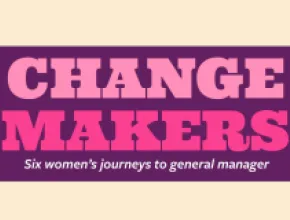On the face of it, leaving the driving to attendees is a great concept.
Meeting planners avoid a variety of logistics issues inherent with flying and gleeful attendees bypass airports with long lines, security hassles, add-on costs and frequently canceled flights.
It’s an excellent plan for everybody, right?
Yes, but planners should not ignore certain concerns and issues with a drive-to in their decision-making process.
The Decision
In a sluggish economy, saving money is a paramount reason for a drive-to. As airline ticket prices have escalated and more meetings are executed closer to home, the drive-to has evolved as a logistics and budget-helping godsend.
“Many people want to bring their families, especially for association meetings, and the drive-to is the easiest, most convenient and money-saving way to do it,” says Deborah Cohen, CMP, director of meeting and convention sales for the Branson/Lakes Area Chamber of Commerce and CVB in Branson, Mo., a desired drive-to destination for Kansas City (3 hours) and St. Louis (4 hours) groups.
For groups with tight budgets, Mike Fernandes, president of Site Selection Services in Dallas, suggests they stay closer to home.
“It helps cut costs even more,” Fernandes says. “I’ve worked with some groups who choose a site an hour drive or less from their company headquarters so set-up staff can drive home at night and they need fewer hotel rooms.”
Others who like to stay closer to home include physicians who have time-crunch issues.
“To doctors, it can sometimes be as much of a time as budget issue and they often prefer a site that’s a short driving distance,” says Renee Radabaugh, president and managing director of Paragon Events, a full-service event management firm in Delray Beach, Fla. “For medical retreats, physicians generally don’t want to drive more than two or three hours so they can be confident they can get back home quickly.”
Golfers are another subgroup that often likes a drive-to.
“The cost of transporting clubs on an airline or renting them is a nuisance to many golfers and some would just prefer to drive to avoid the cost and hassle,” says Cheryl Gelbman, president of Impart, a meeting planner service in Brainerd, Minn., a popular drive-to destination for groups in the Minneapolis/St. Paul area, which is located about a two-hour drive away. “If a group has a large number of golfers, a drive-to is an option that should be considered.”
The key is to survey the wants and needs of your group and determine if a drive-to is a popular option with the majority of attendees.
According to Fernandes, most people, regardless of age, prefer to drive their own vehicle as along as it provides a tangible advantage, such as money savings, time and convenience.
On-Site Issues
Site selection is an important component in a successful drive-to.
“A drive-to can impact attendance positively if the correct site is chosen,” Fernandes says. “The site must be appealing to create an energy level that’ll make the meeting successful. Carefully analyzing the site’s attributes beyond the drive-to logistics is important.”
Planners often look to second- and third-tier cities and easy-to-reach resorts because they offer fewer traffic and parking issues and attendees can sometimes walk to meetings and events.
“You want to make the drive-to experience as easy as possible for the attendee and finding a destination where traffic hassles are minimal helps with people arriving on time for off-site events and being in a good mood when they get there,” says Carol Boyd, CMP, president of Dallas-based C. Boyd Meetings and Events. “Many attendees, especially those who bring their families, want to explore the destination in their own car. If the city or area is too complicated with too many traffic hassles it negatively impacts the experience.”
Lack of adequate parking can also put a damper on a drive-to.
“One of the big reasons for our success as a drive-to market is the amount of available free parking,” says Branson’s Cohen. “Attendees get frustrated if they can’t find parking or they consistently have to pay for it.”
Other questions to answer in the planning process include the following:
- Do any of your attendees want to carpool?
- Is there an easy-to-drive, uncomplicated route to the destination?
- Do all attendees have access to a GPS system?
- Is there nearby off-site shopping, entertainment, restaurants and attractions?
- What are the valet and parking costs at the selected resort destination?
- Will attendees be excited about the drive-to site?
- Is the destination appealing to the attendee demographic in your group?
- Who is the main contact if an attendee has an accident on the way to the destination?
What If?
It’s the last thing anybody wants to talk about on a drive-to, but what happens if an attendee has an accident while driving to or from a destination?
“Generally speaking, if the company is directly involved with the course of travel by providing fuel assistance and mileage compensation, and/or the attendee is conducting business with, say, a company cell phone while driving, then there is probably exposure to liability for the company,” Radabaugh says. “Before a drive-to, meeting planners should always check on legal ramifications with a lawyer, especially if staff vehicles are being used or if attendees will be conducting business in some form while they’re driving.”
Equally disturbing to planners are the issues associated with attendees who are stopped by law enforcement authorities for a D.U.I (Driving Under the Influence) or D.W.I. (Driving While Intoxicated) in their own vehicle.
While the attendee is personally responsible for their own behavior, the legal issues get cloudy when the person is caught driving while intoxicated after leaving a company-sponsored event where alcohol was served.
“It’s very important that planners know the laws about their responsibilities in the countries or states where their event is being staged,” says Anne Thornley-Brown, president of Toronto-based Executive Oasis International, a consulting firm specializing in event planning, executive retreats and team building. “If an attendee drinks excessively at a company event and then gets in their car to drive home or to the hotel meeting site, what is the company’s liability if an accident occurs?”
When people drive to a meeting or incentive, staging an off-site event with alcohol should be done cautiously and only after the legal ramifications have been thoroughly researched, Thornley-Brown says.
The obvious alternative is to provide bus transportation or limo service to the off-site event or stage it at the hotel or resort so an attendee’s room is just a short walk away.
Edward Schmidt Jr. is a freelance writer anxiously awaiting a frequent driver program.






